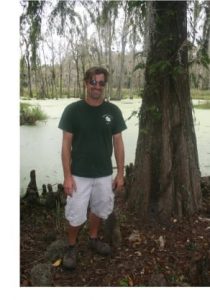Swamp Garden gets new naturalist for improved maintenance
October 6, 2015CHARLESTON, SC – Magnolia Plantation and Gardens has embarked on a multi-year environmental project to re-establish and diversify native plants varieties and rejuvenate the wildlife habitat in the 60-acre Audubon Swamp Garden.
As part of the effort, Stacy Turner has been named to a new position ̶ Audubon Swamp Garden naturalist. The swamp is named for naturalist John James Audubon, who was a friend of the Drayton family that has owned Magnolia since the late 1670s.
A similar ecological project is underway at Magnolia’s 120-acre impoundment and wildlife refuge along the Ashley River. The three-year project there also is designed to improve the wildlife habitat and water quality for wading birds and waterfowl and establish a variety of native plants.
In the Audubon Swamp, Turner has begun remove unwanted vegetation, including cattails from the edges of the swamp to provide a better view of wood duck boxes, cypress and tupelo trees and to improve the habitat for water fowl.
Clearing the swamp of unwanted plants is not as simple as it might seem, said Turner, who has undergraduate and graduate degrees in biology. “You have to look at the water flow to determine where to clear first.” Not all of the vegetation is removed, he added. “It is a balance. You have to leave enough habitat for the wildlife. Ideally, you select the non-native plants to remove.”
Over time, Turner plans to introduce native grasses, shrubs and trees that include yaupon holly, lemon-scented fringe trees, coral honey suckle and crossvine. Each of these plants has a beneficial characteristic.
“I want natives that people don’t usually see,” Turner said. Lantana, which is scattered throughout the swamp, will be replaced with the American beautyberry, serviceberry and sparkleberry. “I would like to use natives in place of the typical plants that can sometimes be invasive,” he said.
Turner has consulted with native plant vendors, a botanist at The Citadel and the Native Plant Society to select 20 initial native plants for the swamp and the best locations for them.
Diversifying the vegetation will improve the swamp garden’s appeal to water fowl and migratory birds. “There is no point for the birds to nest if they can’t find food to feed their young,” he said. “Wildlife also helps to sustain the plants by distributing the seeds.”


















